How Do You Know if You Are in a Wetland if the Site Is Dry
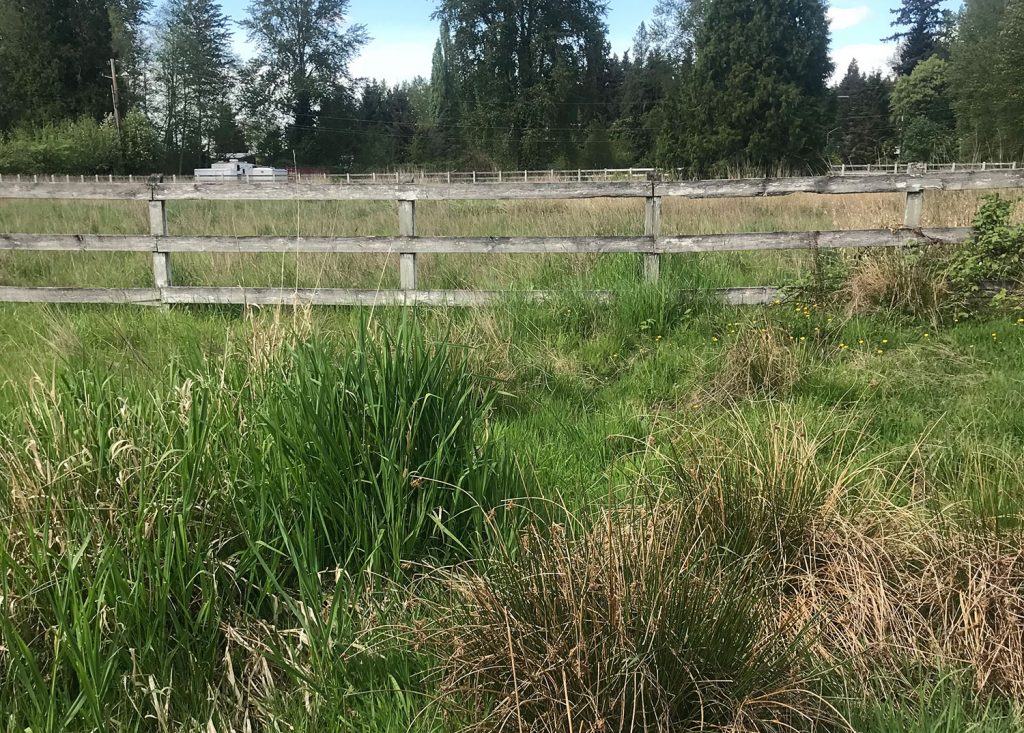
How Tin This Be a Wetland When At that place Is No Water Here?
Nosotros frequently receive calls from landowners or those purchasing country who have been told by city or county staff that a wetland assessment or delineation must be done on the belongings earlier whatever building or development can occur. If streams or soggy ground are present on the land packet this requirement seems reasonable. But – if the property looks dry – a wetland assessment or depiction might seem like only one more regulatory hoop to jump through. A question we often hear is, "How can this be a wetland when there is no water here?"
1 of our earlier blog posts described how wetlands function to regulate stormwater runoff, improve water quality, recharge groundwater, protect coastlines, and provide valuable habitat and nutrient supplies for fish, amphibians, birds and mammals. Wetlands are an of import and integral part of the natural surroundings and of the water quality cycle; that is why there are laws in place at the local, state, and federal level to protect wetlands. These laws regulate the types and extent of land utilize and evolution well-nigh wetlands, shorelines, and streams. Violations of these laws tin lead to severe penalties, including fines and imprisonment. The presence of a wetland, stream, or shoreline on a bundle will bear on not only how the land can be developed, merely if information technology tin can fifty-fifty be developed at all. Because of these regulations, it's important to determine wetland presence on a site earlier development begins.
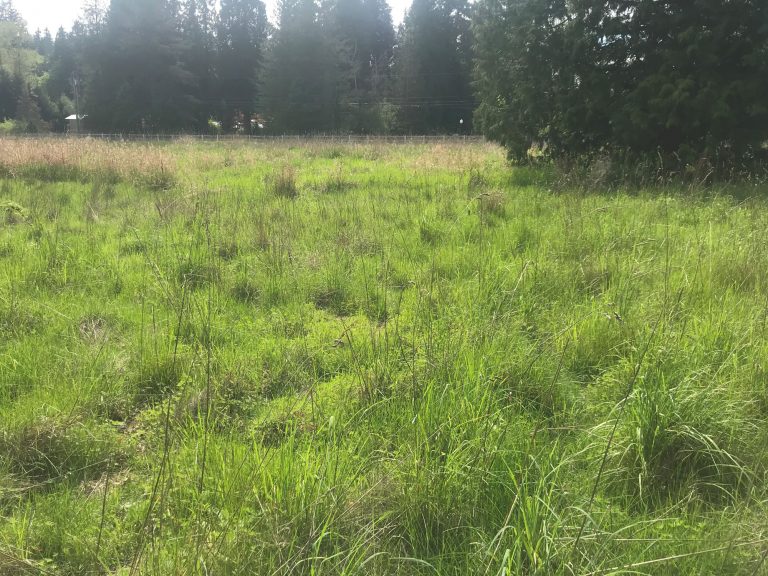
Wetland? Not a Wetland? An surface area that looks dry may actually be a wetland. Sometimes the real reply lies below the surface.
If the belongings contains a damp, soggy, or wet surface area information technology may be a wetland – or maybe non. Or the belongings may wait dry but in that location are wetlands present. And then how tin can you tell? Wetland inventory maps can normally be found on County and Metropolis websites; even so, they should exist viewed with caution. These maps cannot be relied upon to illustrate the actual presence and extent of wetlands, as they are not based on detailed site inspections.
If wetlands consisted of nothing more than wet soils or shallow standing water, even big puddles could exist considered wetlands – but the being of just one element (water) doesn't mean an area is a wetland.
Wetlands are much more circuitous than puddles. In virtually cases, in society to be considered a wetland an area requires a combination of hydrology (the h2o that is present), "hydric" (wetland) soils, and specific types of plants that are adjusted to abound in saturated soil conditions. Factors that must be considered are:
Location
- Where are the shallow water or wet soils situated in the landscape?
Topography and Built Environment
- What kinds of natural and/or human being-made features are in the firsthand area and nearby?
- Hills, gulches, depressions, steep slopes
- Ditches, dams, canals, etc.
Soil Composition
- Are the soils in the area mostly sandy, loamy, or heavy clay?
- Exercise the soils hold water or practice they drain chop-chop?
- Are the soils hydric or non-hydric?
- Hydric soils form when soils are saturated by water or flooded for long periods of time and become anaerobic (lack of oxygen). Prolonged soil saturation results in the displacement of oxygen inside the soil pore spaces past water and in a transformation of other soil minerals. This in turn creates a soil environment that is highly stressful to plants that exercise not have adaptations to survive in this soil environment.
Vegetation
- Is vegetation present?
- If so, what kind of plants, shrubs, and trees does the surface area contain?
- Are the plants hydrophytic – water loving plants that grow either partly or totally submerged in water or waterlogged soil?
- Are the plants non-hydrophytic – plants that cannot tolerate waterlogged or saturated soil atmospheric condition?
Water Source
- Where does the water come from?
- Groundwater seeps, atmospheric precipitation, or from an body of water, river, or stream through shallow interflow, or flooding?
H2o flow
- Is the water moving or still?
- Is it affected by currents or wave action?
Water salinity
- Is it freshwater, saltwater, or some combination of both?
Habitat
- Is the area beingness used by (or does it take the power to support) fish, amphibians, reptiles and/or other wildlife?

Don't assume anything! Fifty-fifty geniuses exam their assumptions by gathering facts and data.
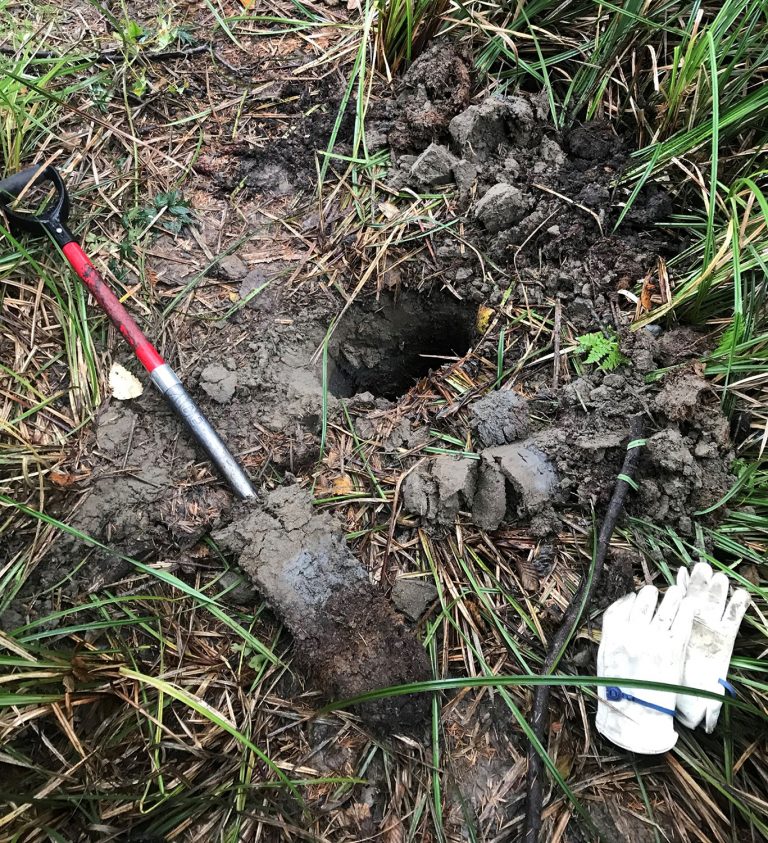
Soil layers tin clearly exist seen on this sample from a information pit.
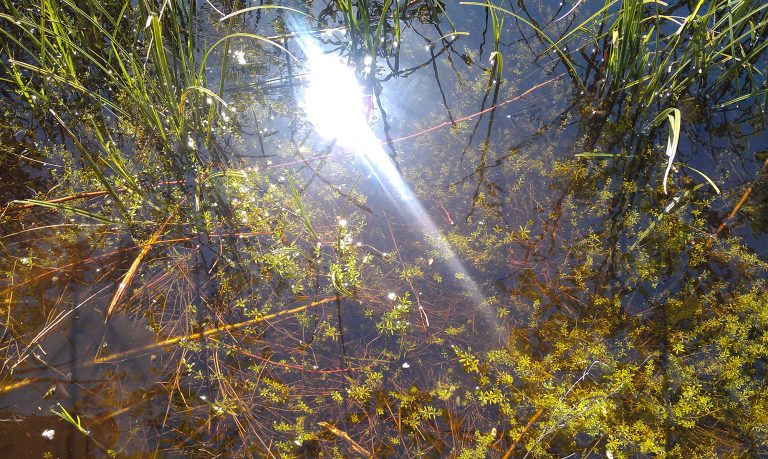
Hydrophytic plants comes in all shapes and sizes.
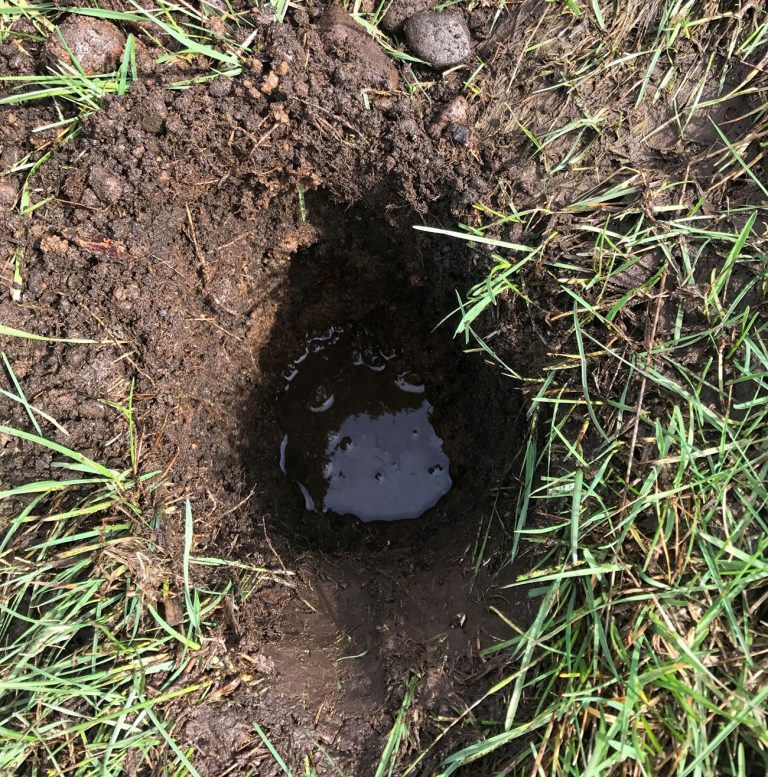
A dry area may have groundwater just a few inches from the surface.
All these factors must be considered when determining whether an area is or is not wetland. Let'southward take some other await at that large puddle: There is standing water in a low in a relatively level area. The water appears to come up from atmospheric precipitation, the vegetation that is present appears to be lawn grass, the soil appears to be sandy, and no amphibians, fish, or wildlife seem to be using the puddle as their habitat. Initial appearances tin be deceiving, so a wetland scientist will investigate that pool in greater detail. Does the lawn grass too contain whatever hydrophytic grass species and perhaps other herbaceous plants that may go unnoticed by the casual observer? A wetland scientist will dig data pits to evaluate soil composition and determine whether groundwater is present and how persistent it is. They will analyze the location of the feature and the topography of the area to make a determination about whether a wet surface area is indeed a wetland and what blazon of a wetland it is.
Rather than brand what may be an wrong assumption almost an surface area, a professional wetland scientist has the expertise and knowledge to accurately determine the wetland status of mapped and unmapped moisture areas. This helps preserve critical wetland areas and can go on landowners and prospective developers out of problem.
Source: https://soundviewconsultants.com/how-can-this-be-a-wetland-when-there-is-no-water-here/
0 Response to "How Do You Know if You Are in a Wetland if the Site Is Dry"
Post a Comment